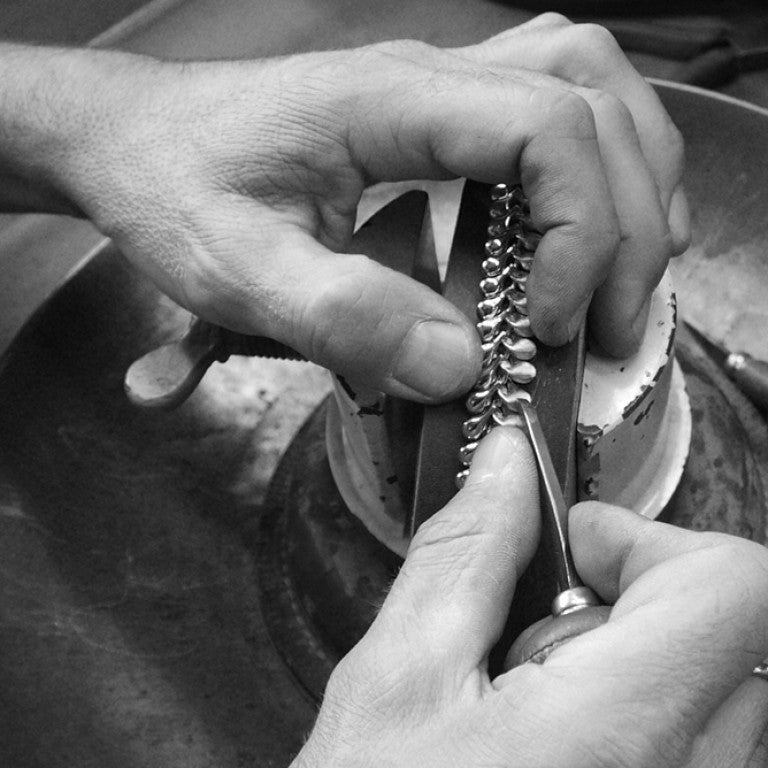HIGH-MANUFACTURED JEWELS
Craftsmanship is at the heart of our company. The hands of our craftsmen masterfully combine wise creativity, experience and talent, achieved after long years of training dedicated to learning the specific goldsmith techniques that represent the DNA of NANIS and that make our jewels so distinctive.
Choral tale freely inspired by Lucrezio's "De rerum natura", the new Nanis campaign takes us on an exciting journey to that suspended and magical place, where the beauty of Nature meets the talent of man.
The surfaces of Nanis jewels are made unique thanks to a special, and very ancient, artisanal workmanship: the hand engraving made with a burin tool. With this instrument, and with a great experience capable of combining strength and delicacy at the same time, our engravers draw deep grooves to Nanis jewels, giving them a soft appearance, similar to that of silk, and extraordinarily brilliant.
The golden surfaces of NANIS jewellery are always perfectly finished. Obtaining these magical surfaces takes skilful and delicate hands. Hands that can perfectly control the finger pressure to polish with light and precise touches the tiny surfaces of our precious jewellery. This is a delicate operation, made by skillful, delicate hands, achieved by the uses of 20 different brushes and seven different types of abrasive pastes in order to reach the best finishing results. This procedure requires extreme attention to avoid any modification to the original shape of the jewel.
All our jewels are hand-finished. Smoothing, engraving, polishing and all other types of finishes are performed patiently by our craftspeople’s hands. Every process brings with it different challenges. Differences due to the shape of the jewels. Difficulties increased by the presence of edges, moulding, soft spirals or perfectly level surfaces, by inaccessible crevices and by particularly delicate elements… This is where it sometimes becomes impossible to brush polish, as commonly occurs, pieces with hidden and apparently unreachable corners. Therefore, we turned to the centuries-old tradition of the trade, recovering the ancient method of thread polishing. A simple and effective method of polishing otherwise inaccessible concavities. An elementary process that consists of repeatedly sliding a cotton thread forwards and backwards in the cavity to be polished, applying slight pressure until achieving the desired result.A slow and precise process, the repetition of a simple gesture like a drop of water smoothing the cliff face.









